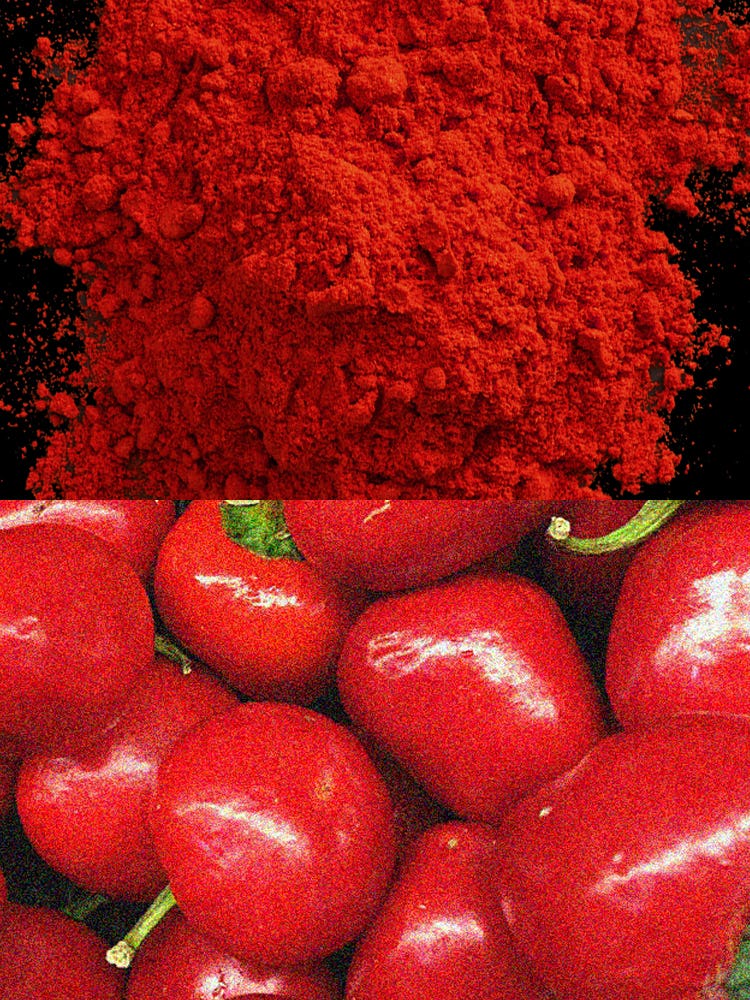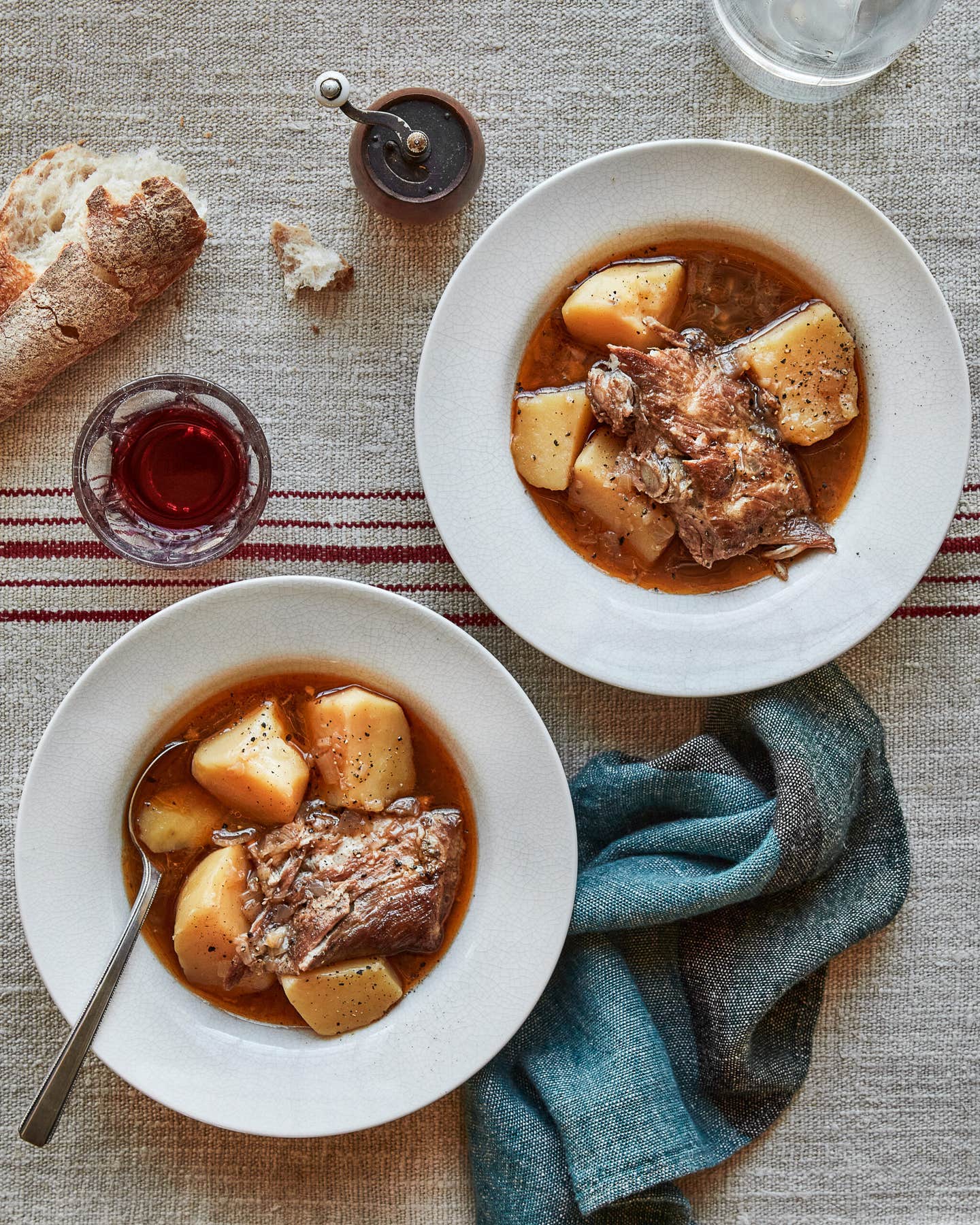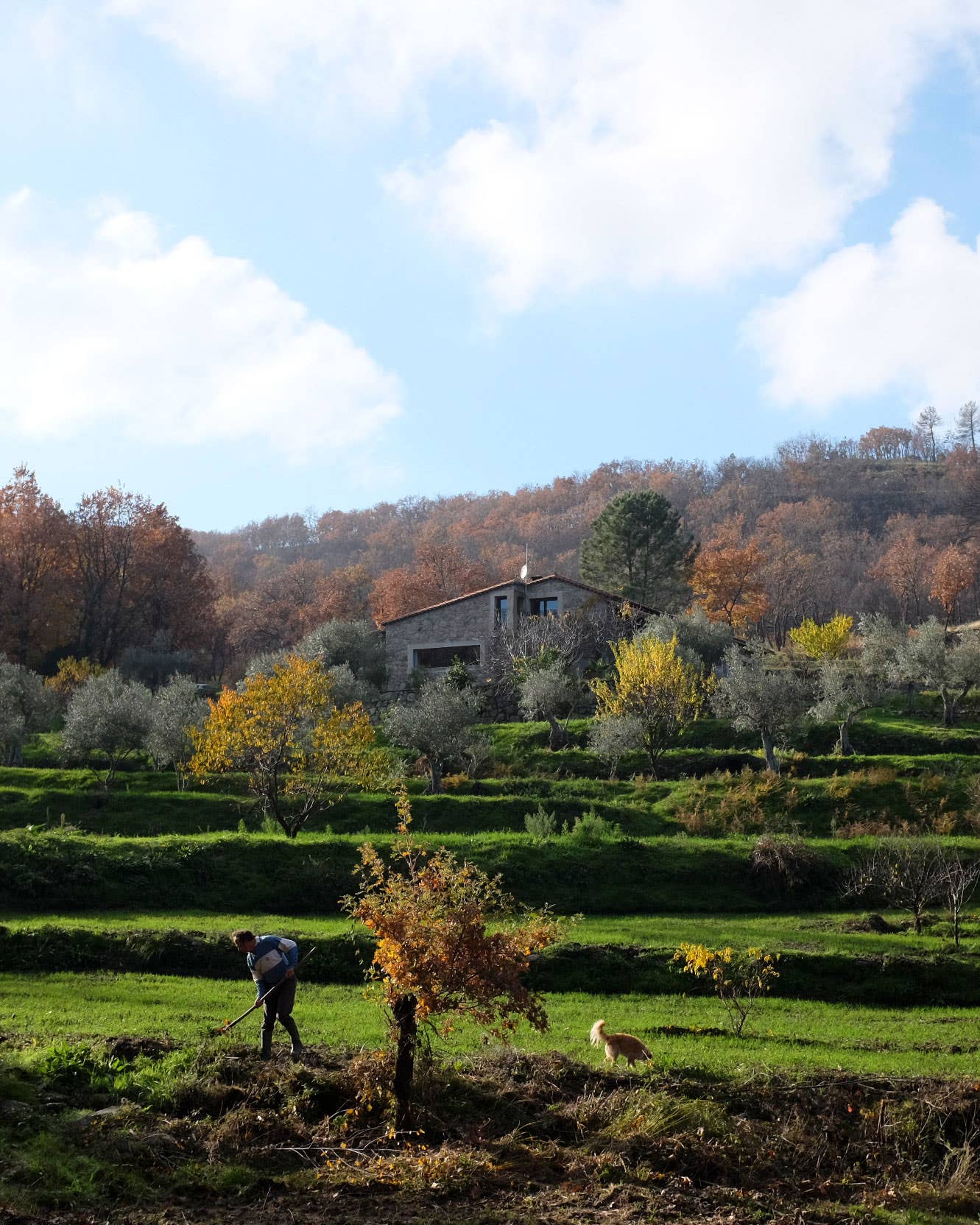
Before I moved to Spain, the pimentón in my cupboard often wound up collecting dust. Sure, I loved the smoky undertow it brought to the odd Spanish cooking project, but getting through a whole tin before it expired? Imposible.
But if eight years’ eating my way across the Iberian Peninsula have taught me anything, it’s that pimentón is a miracle spice, its barbecue-pit smokiness enhancing everything from seafood to stews to fruit salads. These days, I keep three types in my pantry—and they never last longer than their expiration date.
All that is to say, I have a hunch you’re not using pimentón wrong—you’re just not using it enough. So, don’t let any of that twee little tin go to waste, and up your pimentón cooking game with these essential tips.
1. Play around with different Spanish paprika varieties.
As food historian Almudena Villegas told me, “One cannot conceive of Spanish cuisine without pimentón.” There are three main categories to know: dulce (sweet), agridulce (medium), and picante (hot). The first is made from Jaranda and Bola peppers; the second from Jaranda and Jariza; and the third from Jeromín, Jariza, and Jaranda. The different pepper types and heat levels make each pimentón variant distinctive, so buy a tin of each and experiment freely. Harder to find is the less-famous paprika of Murcia, an unsmoked variety made from sweet, bulbous ñoras.
2. Buy pimentón in small quantities.
Past-its-prime paprika won’t kill you, but it lacks the complexity and fruitiness of the just-packaged stuff. Ensure your paprika stash is always fresh by buying in small quantities from a trusted purveyor like Despaña or La Tienda, then use it within a year (ideally within six months). If the expiration date has passed, chuck it and restock your supply.
3. Store it as you would good olive oil or wine.
Unlike most spices in your cupboard, pimentón still comes in old-timey metal tins. That’s not just good marketing—the opaque container shields the paprika from light, which degrades it. So do heat and humidity. Store pimentón in a cool, dark, dry place (i.e., not next to the stove or on a shelf that gets sunlight).
4. Turn to Spanish paprika for color, not just flavor.
Pimentón makes a striking garnish—even when you don’t want smoke to be the dominant flavor. I like dusting it onto pale-colored dishes for a vivid pop of red: buttered baked potatoes, hummus, cream of cauliflower soup, egg salad, risotto, garlic bread, braised cabbage, poached fish … The applications are endless.
5. Use it liberally when grilling isn’t in the cards.
The downside to living in a postage-stamp apartment in Madrid is that I can’t grill. Enter pimentón, which comes to my rescue when I’m craving ribs or kebabs or baba ghannouj. I add it to spice rubs before broiling or grill-panning my protein or veg of choice, or I drizzle the finished dish with paprika oil (more on that below).
6. Bloom your pimentón for extra depth of flavor.
I’ll never forget watching Pablo Barrera make patatas revolconas (pimentón-laced mashed potatoes with crispy bacon) in the mountains north of Madrid. The way he dropped heaped spoonfuls of paprika straight into sizzling-hot pork fat before stirring the bright-orange liquid into the mash. “Blooming” the pimentón this way coaxes even more complexity from the spice—but be careful it doesn’t burn, lest the spice turn bitter. Twenty seconds is about right. Pour this Spanish-inflected tarka of sorts over soups, stewed legumes, boiled meats, mashed root vegetables—you name it.
7. Learn to recognize this symbol—it’s a guarantee of quality.
The most sought-after pimentón comes from the sun-soaked region of La Vera, in landlocked Extremadura, southwest of Madrid. Every tin of real-deal pimentón de la Vera bears the symbol of the D.O.P. (Denominación de Origen Protegida), the government body that oversees and regulates pimentón production. Keep your eye out for an abstract rectangular emblem with a spiral sun and long red chile.
8. Understand the difference between Spanish and Hungarian paprikas—and when it’s ok to substitute.
Hungarian (and Hungarian-style California) paprika can be mild, medium, or sharp (hot), but it’s seldom smoked like pimentón. Recipes that call for Spanish paprika, like escabeche or baked rice, are after that campfire flavor, which Hungarian simply can’t provide. Likewise, substituting pimentón for Hungarian paprika in paprikash or goulash would make for an overly smoky result. Use the type of paprika the recipe specifies—unless it calls for only a dusting, in which case you’re safe to use whatever paprika tickles your fancy.
9. Add it to your vegetarian (and vegan) cooking arsenal.
Let pimentón be your secret weapon next time you want to channel the savory smokiness of bacon, chorizo, and other cured meats without resorting to animal proteins. Stirred into stews and sauces or sprinkled on salads, Spanish paprika hits those high notes of meaty umami that everybody craves. "It's like a drop of liquid smoke," according to Anya von Bremzen, author of The New Spanish Table. "I like to put in borscht, because some recipes call for Ukrainian smoked prunes, which are hard to find."
10. Think of pimentón as a charcuterie board pinch hitter.
Some of the best Spanish cheeses and cured meats are flavored with pimentón, from Canarian almogrote and Majorero cheese to Extremaduran chorizo and Majorcan sobrassada. But even if you don’t have access to great Spanish charcuterie, you can add smokiness to appetizer spreads by tossing olives with olive oil, minced garlic, and pimentón. Or pan-fry whatever nuts you have on hand with a bit of oil, pimentón, and a spoonful of whatever spice blend you fancy.
11. Don’t stop at savory.
Pimentón’s presence in Catalan dishes like spinach with raisins and pine nuts got me thinking about the spice’s compatibility with fruit. I’m pleased to report that pimentón pairs marvelously with ripe mango, especially as a salsa for grilled fish or chicken, as well as melon or orange salads, and grilled stone fruit dolloped with melty cheese.


Keep Reading
Continue to Next Story










